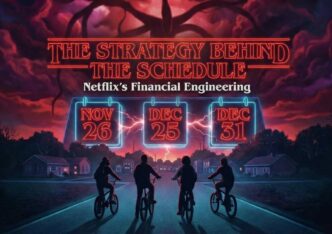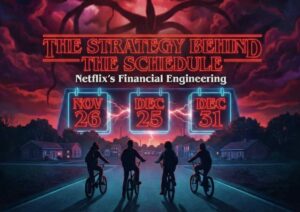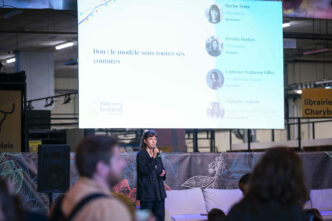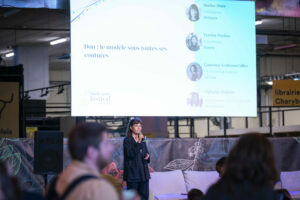

The separation between editorial and business activities of news organizations has long been a fundamental norm of journalism. Journalists have traditionally considered this separation as both an ethical principle and an organizational solution to preserve their professional autonomy and isolate their newsrooms from profit-driven pressures exerted by advertising, sales and marketing departments.”
Interviewing 41 media professionals in 6 European countries, an interesting 2020 study (although a bit dated now given the rapidity of change) looks at how editorial and commercial integration has become the norm, and what this looks like. Paired with best practices from those working within the industry, there’s some valuable lessons to be learned and perhaps a new role for journalists: subscription sellers.
Understanding the root of this challenge
Work into cultural and structural change needs to start with understanding the context, the existing shared unconscious beliefs and how they play out against current priorities. Many skip this stage and jump straight into change places. But the better existing values are understood, the more focused change work can be, the more easily existing values can be used to leverage change and the better the outcomes.
When it comes to bridging editorial and commercial teams, the study outlines concerns with journalism autonomy, a key tenet of the journalist’s identity and a way to safeguard the credibility of the information they produce.
Journalists often employ the metaphor of the ‘wall’ of separation between editorial and business departments, staff and functions. As suggested by Coddington (2015), this metaphor evokes the separation of ‘church and state’ established in the US First Amendment, and journalists who use it tend to ‘characterize themselves as the church and the business side as the state’. Consequently, the newsroom turf is characterized as ‘sacred’, and breaches such as intrusions of business interests into news production processes are considered ‘heresies’ that damage the purity and integrity of the profession (Coddington, 2015: 73).”
In short, separation is traditionally a norm in journalism, an informal schema and assumption, often applied unconsciously.
Other editorial norms include a commitment to accuracy, fact-based discourse, the practice of reporting, as well as, to different degrees in different countries and organizations, ideas of fairness, impartiality and/or objectivity. When discursively articulated, norms often take the form of ‘ought statements’, that is, morally potent prescriptions defining how individuals ought to behave to be consistent with shared values (Horne, 2001: 4).”
Breaking down the silo
Despite this editorial norm, editorial–commercial integration processes have been accelerated in response to structural changes like the move to an increasingly digital media environment, greater competition for audience attention and advertisers’ expenditure, and the declining profitability of many newspaper organizations.
I am convinced that, today, it is not possible to think of building a sustainable business model if the editorial component does not constantly talk to the business component. The traditional canonical separation between the state and the church has no raison d’être any longer, and this is because we no longer live in a time of separation between the state and the church. We are at a time when […] the business component, the management, needs to keep listening to the editorial component, […] and, at the same time, the editorial component cannot pretend that it does not have a sustainability model on its horizon, because otherwise I don’t think we are going anywhere. (Editor, newspaper, Italy, from study)”
Language is important, it reflects and elicits change
Whilst interviewees used building and spatial metaphors to represent the separation in the past (walls, silos, boundaries), current practices were described with phrases connoting a softer separation (blurred line, wall with holes) alongside ecological metaphors, linking this process to evolution and adaptation.
“This alternative perspective posits that organisms must adapt to survive major environmental changes; likewise, it suggests that, faced with diminished profits and layoffs, news companies are ‘naturally’ responding to structural changes by pursuing higher integration between news and advertising. By adapting new metaphors, journalists legitimise new practices that clash with the traditional norm of separation (Artemas et al., 2016)”
The new norm of integration
Following the study, we can consider this new norm to be based on three main concepts – collaboration, adaptability and business thinking.
Collaboration: cross-functional teams representing editorial, marketing, sales and tech departments need to be involved when new digital products are designed. Inter-departmental collaboration is thus normatively framed as a necessary condition to favor exchanges of ideas and innovation in a digital environment.
We had this expression here, for many years, ‘the Chinese Wall’ between the business side and the editorial side. Right now, [journalists] can see us every day, because we sit in the newsroom, and we are really interested in the work. We’re attending all the meetings. […] (Manager, newspaper, Poland, from the study)
The second concept, adaptability, is also framed as a key value. This is clearly illustrated, for instance, in the following quote from a manager of a French broadcaster:
I don’t know if tomorrow the job that we do today will be the same. Our business keeps changing every day. And, in fact, I think the key to success is adaptability. It is not easy if we do not have journalistic, marketing, and business teams that are able to adapt to changes. (Manager, TV, France, from the study)
Business thinking is the third concept that emerges as a central value in the norm-building process. Like the other key values, it exerts moral force. This is illustrated, for example, in the following quote from an editor of the previously mentioned French broadcaster, who normatively frames the development of business-thinking skills within editorial departments as a new essential requirement.
Now it’s clear, especially for a journalist, that it’s important to know if the content you’re producing can bring money in. A few years ago, this might have seemed crazy, but now we have to know, if we want to survive, whether what we produce can have economic [gains]. (Editor, TV, France, from the study)
A new role for journalists: subscription sellers
With these new norms, journalists should also develop new skills and adopt different approaches to their daily work to favor collaboration with editorial. Ultimately, in the digital world, journalists are expected to fulfill the new role of subscription sellers.
My biggest [lesson] learned is: ‘Put the numbers on the table and then let the journalists be very creative and find their way to those numbers’. […] You need goals and parameters that you can follow every day […] in order to get people understanding the need for change […] [and] that their work actually affects the whole newspaper. […] They just need to be activated, not by saying what they need to do, but they must become both problem solvers and subscription sellers. (Editor, newspaper, Finland)
Key takeaway here: those working on these integration projects (often ‘bridge rolers’) should help journalists understand why they need to take on this role.
Balancing old and emerging norms
Money cannot actually affect the news. […] You have to find the right balance between having the business side working with the editorial side and some sections [that] should be completely free.
The gradual move from old to emerging norms involves a difficult, ongoing negotiation. Cultural change doesn’t happen overnight, it’s not about revolution, but evolution, and understanding and dealing with this requires strong leadership.
Buy-in from the top
The leader is the single most powerful influence on an organization’s culture, and their signal in a certain direction will be the single most powerful lever for change (and the opposite if they don’t buy in).
The uniform recommendation is fast, unilateral action: the longer you wait, the higher the price – strategy implementation is hesitant, big decisions are fudged, transformation is slower.
Make use of data
Although culture is the one thing that transcends all KPIs, they’re valuable for adding a layer of explicit accountability to middle management, turning journalists to focus on more business-oriented metrics.
Reuters Institute gives the example of The Guardian who uses data to create nudges for the team.
One of the big reasons this has been so successful for us is because of structural changes three years ago when we required desks to be wholly accountable for their work and for their staff, so they couldn’t hand things off anymore, as with ‘I’m only responsible for like this one element’. Now it’s ‘No, you’re responsible for all of it’. … because of that, people had to start leading and managing their teams better because the buck stopped with them.
We added a field in the CMS… ‘the article should be this long’ … The action we wanted was, ‘just think about how long it should be’. … we did that not by telling them to do that but by putting in a small field, adding a tiny bit of friction
Data projects are about far more than the data. Data interventions can deliver cultural change and strategic change, provided there is clarity around what they need to deliver from the start:
The main thing is the specificity of the aim … start with something specific that you’re trying to change. If you’re able to change it using the data, then that leads you into very interesting places, and probably ensures that things go well. … I think that’s why loads of people who have tried to copy us sometimes fail, because they think what they’re doing is about data. … They think that it’s just important to have data in the newsroom … If your aim isn’t, ‘we need to improve this thing. And the data will help us do that’, then you’re on a hiding to nothing.
Training your new leaders
Reuters bring up the important question of leadership in this new domaine:
Leaders in the middle of the organization increasingly carry the burden of achieving OKRs and KPIs – and they need support and training to do this. Previously they didn’t need to be good leaders of people, now they do. But how to be a good leader needs to be learned. Few are naturally gifted, and management was not what they signed up for when many leaders chose journalism as a career. Investment in skill building here, especially in performance management, project management, feedback and mentoring, will pay huge dividends. Good leadership is learned, not innate.
For examples of bridge roles in action, working to bring editorial and commercial closer together, have a read of this article with cases from Berlingske Media, New Statesman Group and BBC.












